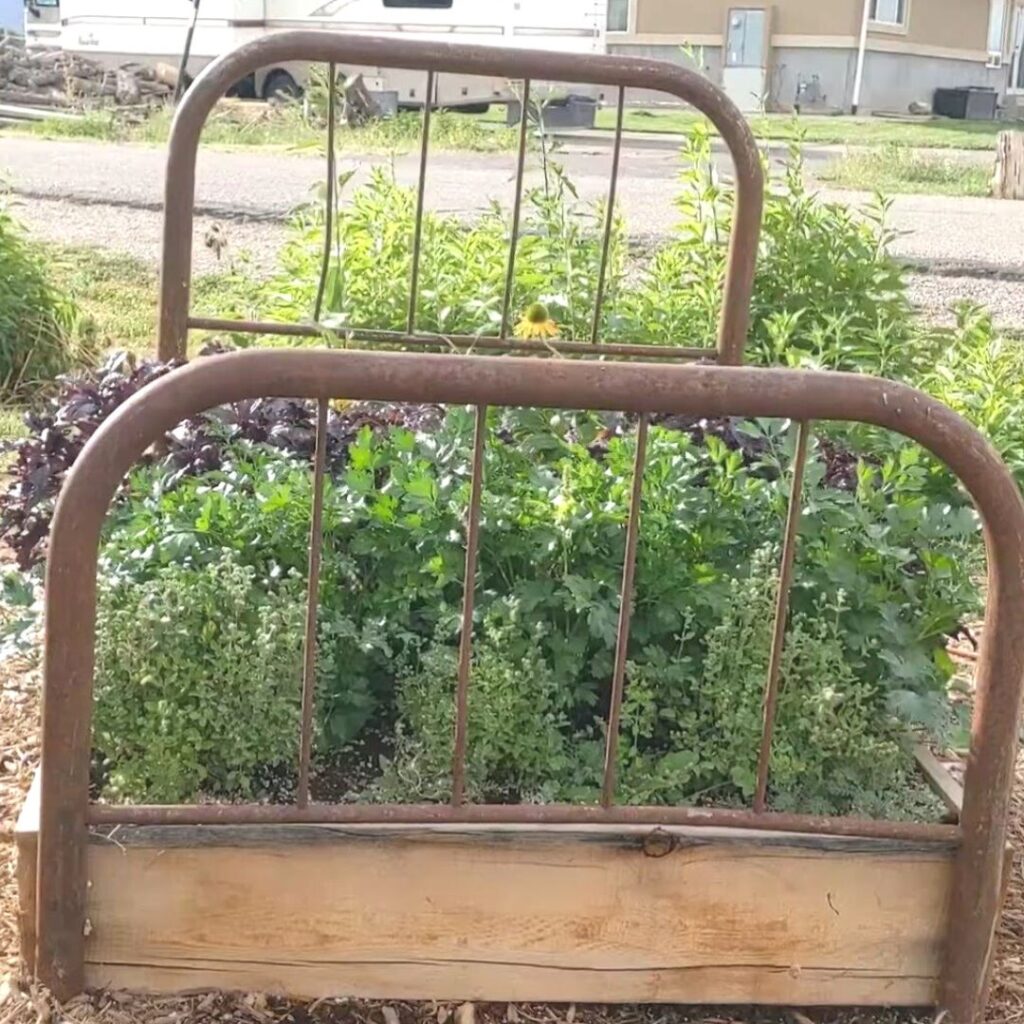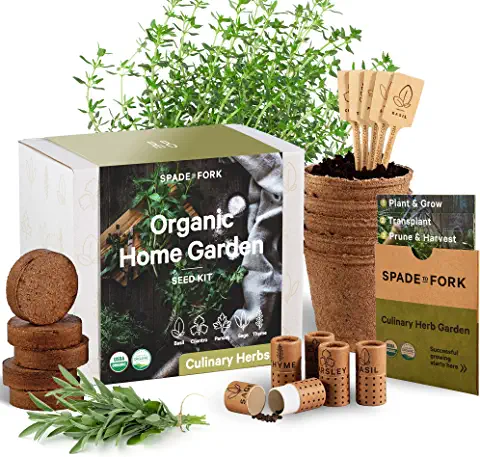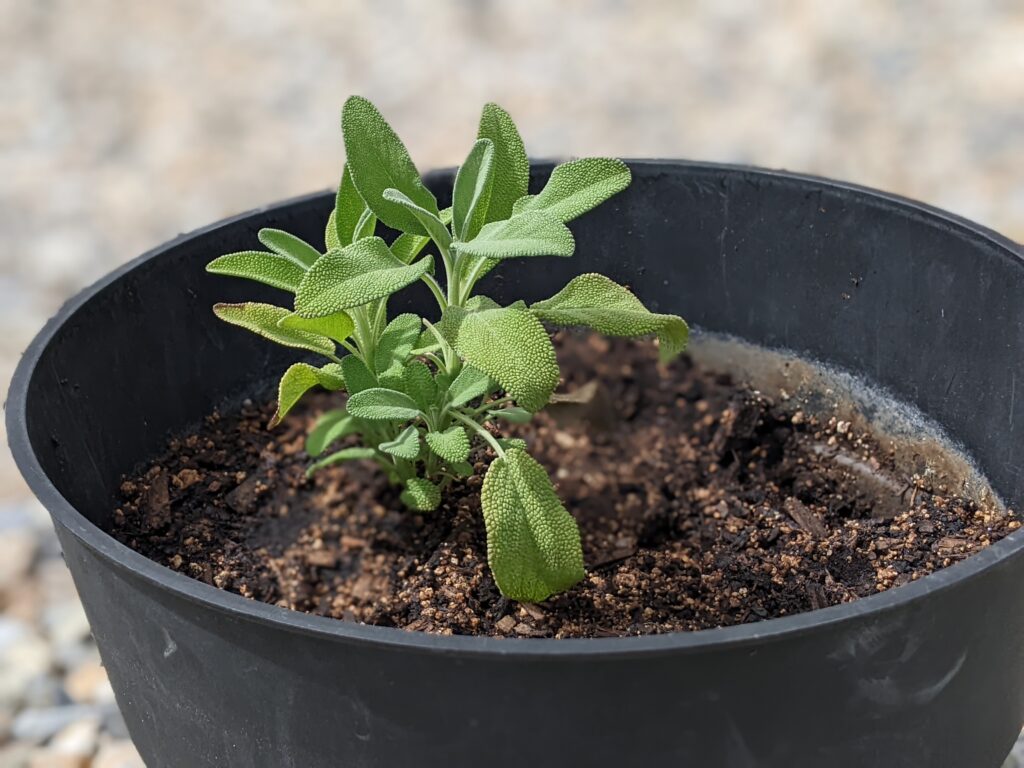How long do herbs take to grow?
Want to grow your own food starting with herbs? In this post I talk about the quickest growing herbs, easiest herbs, and so much more!

So you want to start your own herb garden but you’re unsure where to start! I have been there too! I hope to help you settle your questions and help get you on your way in growing herbs in the best way for you. First we need to talk about the different types of herb varieties in order to know how long herbs take to grow.
What are annual herbs?

Annual herbs are herbs that are planted in early spring in the ground after your last frost date. You sow seeds in a sunny spot in moist soil in order for the seeds to germinate and the plants to have the best time growing. If you plant any seeds in dry soil, they will not grow.
The growing season for these plants is just spring to late summer and die once a frost comes and they don’t come back. They will need to be planted again the next year.
Some examples of an annual plant are: sweet basil, cilantro, dill, and fennel.
What are perennial herbs?

Perennial herbs com back each year. The life cycle of perennial’s is a little bit different. These herb plants will go dormant over the winter in a cold environment and pop back up again in the spring. These are less work as you don’t have to re-plant them each year. You will need to be aware of which ones will need pruning in the fall or spring.
Some examples of perennial herbs are: Lemon balm, oregano, sage, lavender, and mint. Planting perennial herbs is done in a similar way as annual herbs. Some will sometimes take longer to mature from seed than annual herbs.
It may even take a few years for a more shrub-like herb to reach full maturity when starting from seed. You can also purchase perennial herbs that are a mature plant at your local nursery. When you plant them, make sure to water them regularly for the first season for the best results.
What are a biennial plants?
They are plants that have a two year life cycle. The plant generally bolts at the end of its second growing season, dropping seeds to re-seed itself, and then the plant dies. If the right conditions occur then the seeds it drops will grow the following year.
Some examples of biennial plants are: parsley, caraway and watercress. Plant your biennial herb in well-draining soil to ensure healthy growth.
How to start seeds indoors?
You can also start growing annual herbs indoors. Whenever planting seeds indoors you will need to put them in a sunny window sill in a south-facing window. This natural light of a south facing window should provide full sun to grow great indoor herbs.
When planting seeds indoors the soil type you will want to use is a seed starting or potting mix. In addition to good soil it is also a good idea for your pots to have drainage holes so that water doesn’t pool up in your pot. Have something below your pot to catch the excess water.

Your seed packet will let you know how early to start your seeds indoors according to your frost date. You can also start seeds where there isn’t any natural light. Some people will start their seeds in their basements or laundry rooms. They use grow lights instead of window light. This is a good option if you don’t have a south facing window.
You will want to make sure that the room you are starting seed in isn’t too cold though. If it is you can also use heat mats that you place under your seed trays. Something to remember when starting seeds is how long they germinate. Germinating is the process of the seed activating and popping out of the soil. This will not happen right away.

For some herbs, the germination might not happen for two weeks! If starting seeds isn’t your thing, you can usually find some herbs at your local garden centers.
What are the easy herbs to grow?
Herbs that are easier to grow can be both perennial or annual. Like I mentioned before herbs that come back each year (perennial) and don’t need to be replanted are pretty easy. Some of the easier perennial plants are mint, sage, lemon balm, and lavender. Easy annual herbs and ones that I have liked growing are basil, dill, and cilantro.
Something to consider too when deciding what herbs are the easiest to grow is your soil type and if you have full sun or not.
If your yard or balcony is in partial shade then you will struggle with a plant like basil. Thyme, oregano, sorrel, mint, cilantro or rosemary will all do well in partial shade.
What are the fastest-growing herbs?

Want to get your hands on some fresh herbs sooner than later? Try growing some of the fastest growing herbs. Some of these herbs are oregano, dill, fennel, sage, basil, and mint.
What are the uses for herbs?
Now that we have gone over the different types of herbs let’s talk about what they are used for. There are so many great uses for herbs! I love a good fragrant herb. Not only are they pretty but they smell amazing. I love going out and rubbing my fingers on their new leaves and getting the smell on my hands. But smell isn’t the only benefit.
Herbs are used around the world in teas. I have been adding lemon balm to a variety of different teas and it has upped the flavor significantly. I just go out to the garden, pick a few leaves and put them in my mug with whatever tea I am steeping at the moment. Any of the mint varieties are a great addition to your tea cabinet. If you have a large harvest of your herbs you can dehydrate them and store them for later.
Along with tea, people use herbs for medicinal uses. Many use them for treatment for sickness or for a calming effect towards anxiety or depression. Though herbs may help, it is always a good idea to go to a doctor if you have concerning symptoms.
Last but not least, herbs are super important in culinary use. Many Mexican cuisine dishes, Indian, Italian and American dishes contain herbs to really spice up their dishes. Some popular culinary herbs are basil, thyme, sage, rosemary, coriander/cilantro, dill, parsley and bay leaf.
There is something amazing about adding fresh homegrown herbs into your food. I remember the first time I put fresh basil leaves into my pasta sauce. My entire family could tell the difference and they loved it! Now it doesn’t feel like summer without the aroma of fresh herbs in the kitchen!
Can I grow herbs indoors?
Some herbs can be grown indoors. As I have mentioned before, they will need access to sun. Check out THIS POST for growing an indoor herb garden. I would say at least four hours of direct sunlight or a grow light. When growing herbs indoors you may need to consider how big a plant may get.
For example, basil is a great herb that can be grown indoors year round. But a basil plant can become quite large. If you are wanting to grow your herbs on a small window sill in your kitchen, you may rethink growing such a large herb. One way to get around this is to trim your plant often. This will promote new growth as well.
If trimming your larger herbs is giving you more herbs than you know what to do with, consider getting a dehydrator. This is a perfect way to preserve your harvest. Simple place your leaves on the dehydrator trays and set the time suggested in the manual for your herbs.
Once they are dry and crisp store them in air tight jars. Some herbs are better stored whole, but others you may want to crush up. Herbs like rosemary or oregano would be nice to have crushed up so that you can sprinkle them over a dish.
Some herbs that would do best growing indoors are basil, rosemary, oregano, parsley and thyme.
Are you worried that maybe growing an herb garden indoors may be an eye sore? Check out this or this option. Herb gardens can add to your decor. There are many different beautiful indoor growing systems for your home these days! It’s like a double bonus! They can bring beauty into your home, make your home smell good and up the flavor of your favorite dishes!
Can I grow herbs in pots?
Herbs can be grown in pots. Most do really well in a pot. Some say to grow mint in pots because it has very high growth rates and can take over other plants. When planting in pots there are different things to consider.
One is that you want to make sure the pots have good drainage. If your pot doesn’t have drainage holes at the bottom you will want to make some yourself. if there are no holes, then water can pool up and rot out the roots of the plant.

Another thing to consider is what kind of pot to use. I would avoid clay pots or terra cotta pots. Those are really popular, but in extreme heat, they will over heat your plant’s roots and maybe even kill the plant. Imagine a pizza oven. What is it made out of? Clay.
Plastic, light colored pots are best when it gets really hot. In late winter you will want to bring your dormant perennial herbs into your garage or a shed. The extreme cold weather can freeze the roots. Plants in pots are more exposed to the extreme temperatures.
You will want to give your potted herbs “plant food” once a month. I like using fish emulsion. This is because the nutrients in a pot drain out the bottom from being watered.
For more information about growing plants in pots click here.
How to care for your herbs
- Make sure they are planted in a sunny spot.
- Water regularly. Herb plants enjoy frequent watering. If you go to water your plant and the soil is already moist, then wait a day to water. You don’t want to overdo it.
- Check your plant regularly to make sure that there aren’t any pests taking over. If you find any bugs on your plant simply remove them.
- Once your plant is established, harvest regularly for more vigorous growth. For most herbs, if you harvest the plants they will grow back more and provide you with more growth.
- Add compost to your garden bed in the spring or the fall. You should do this at least once a year.
- For perennial plants, you may need to prune them in the fall or early spring.
Now that you have learned what herbs grow the fastest and how to incorporate those herbs into your garden, go ahead and get started!
Pin this for later and comment below on your favorite herbs to grow!



